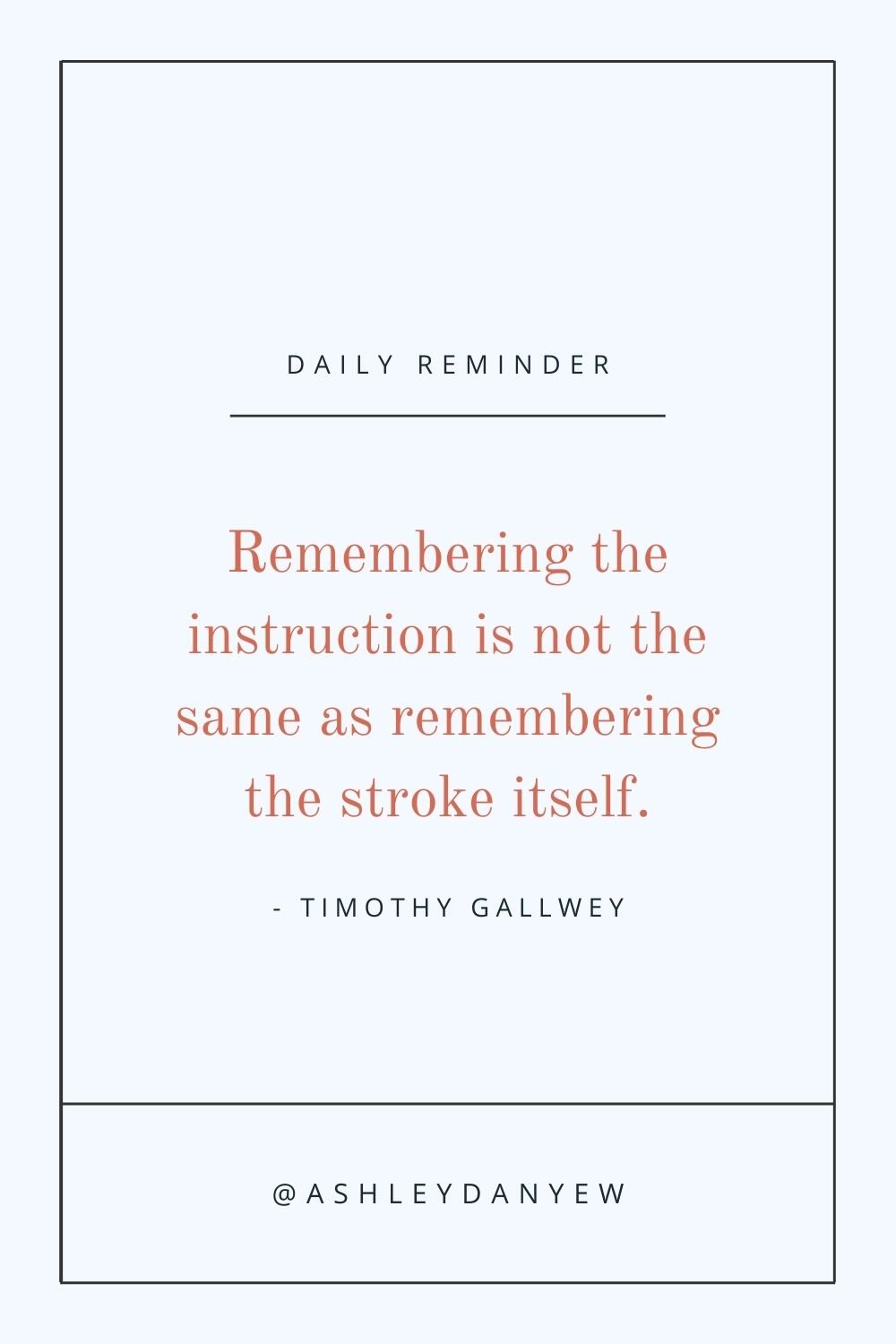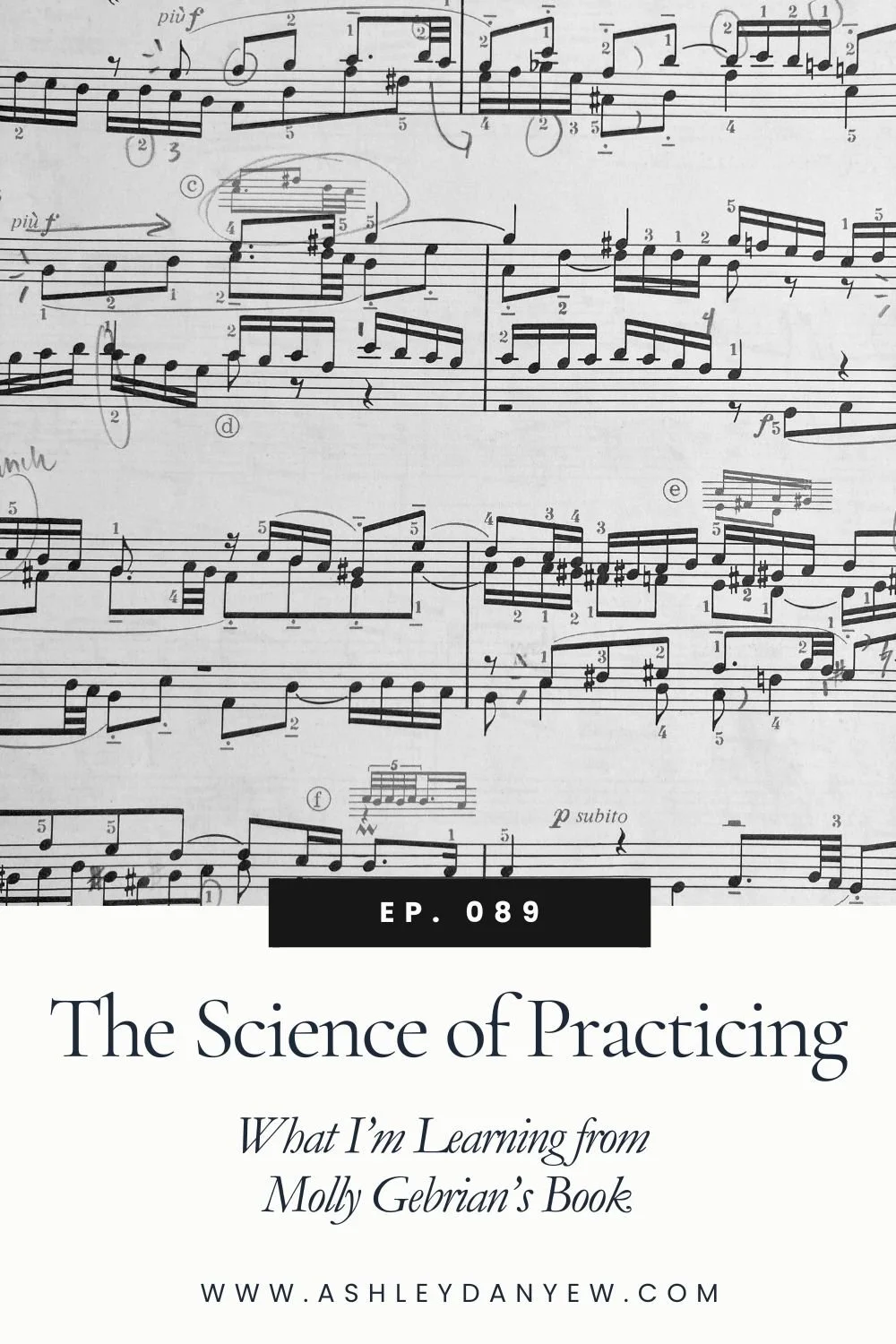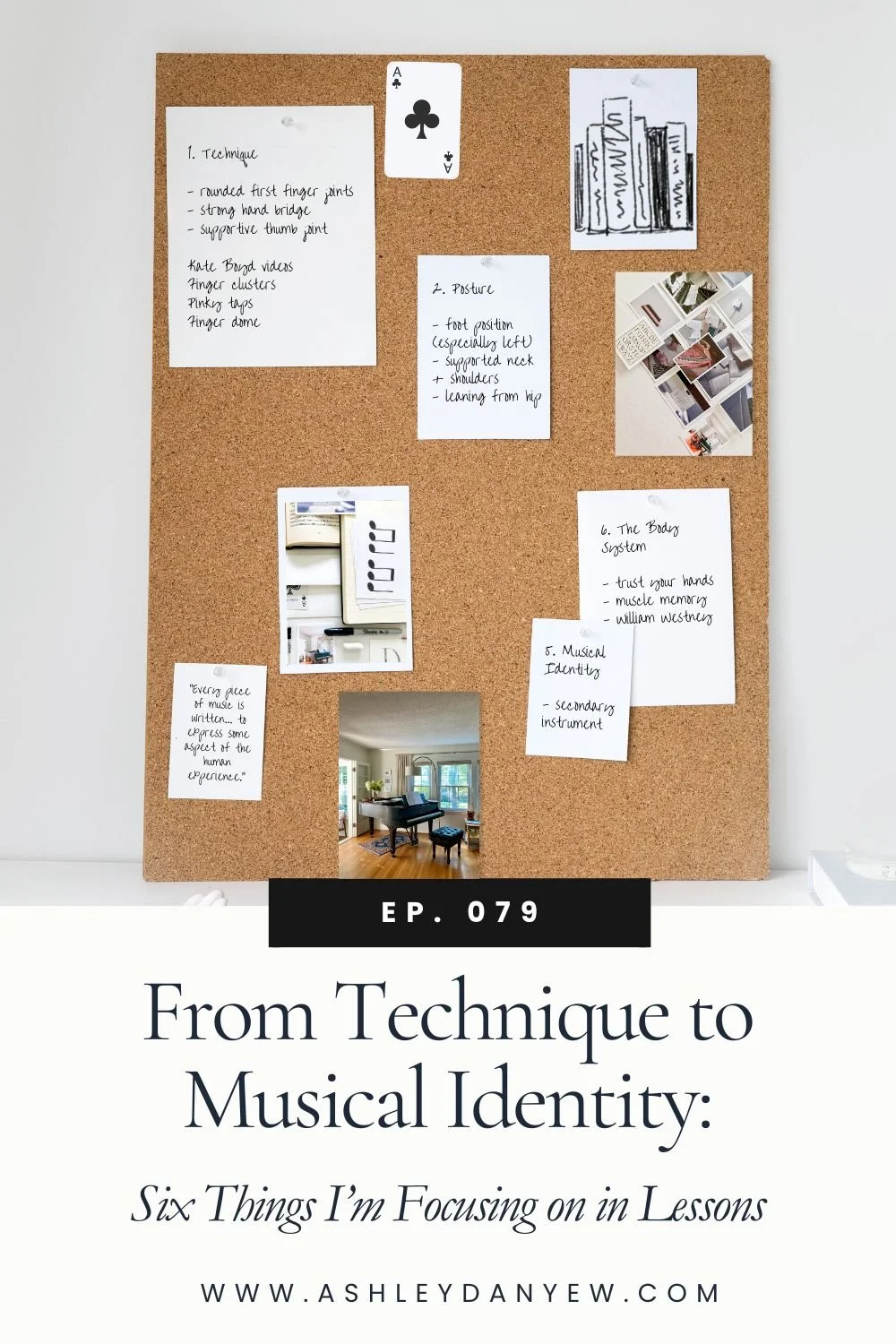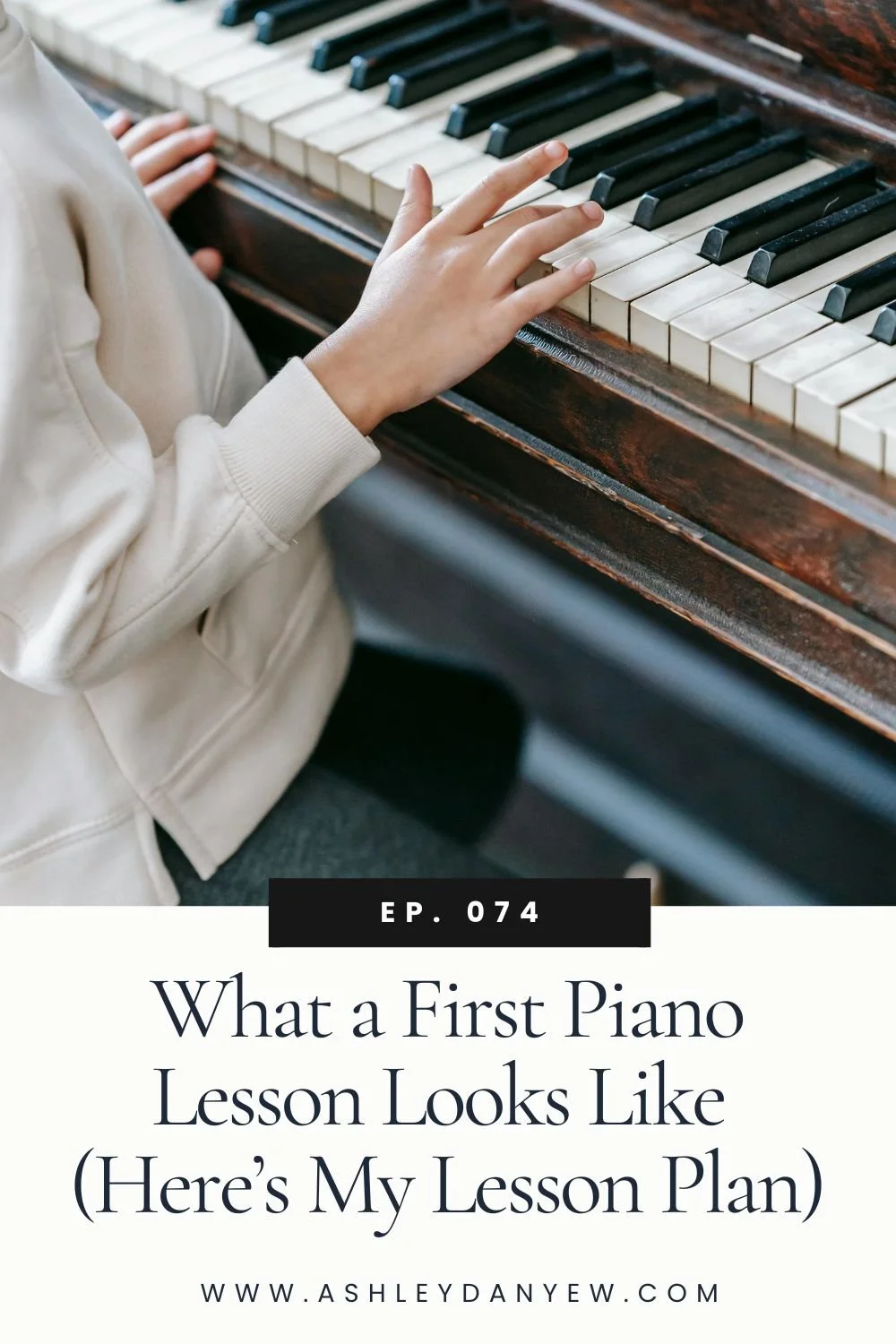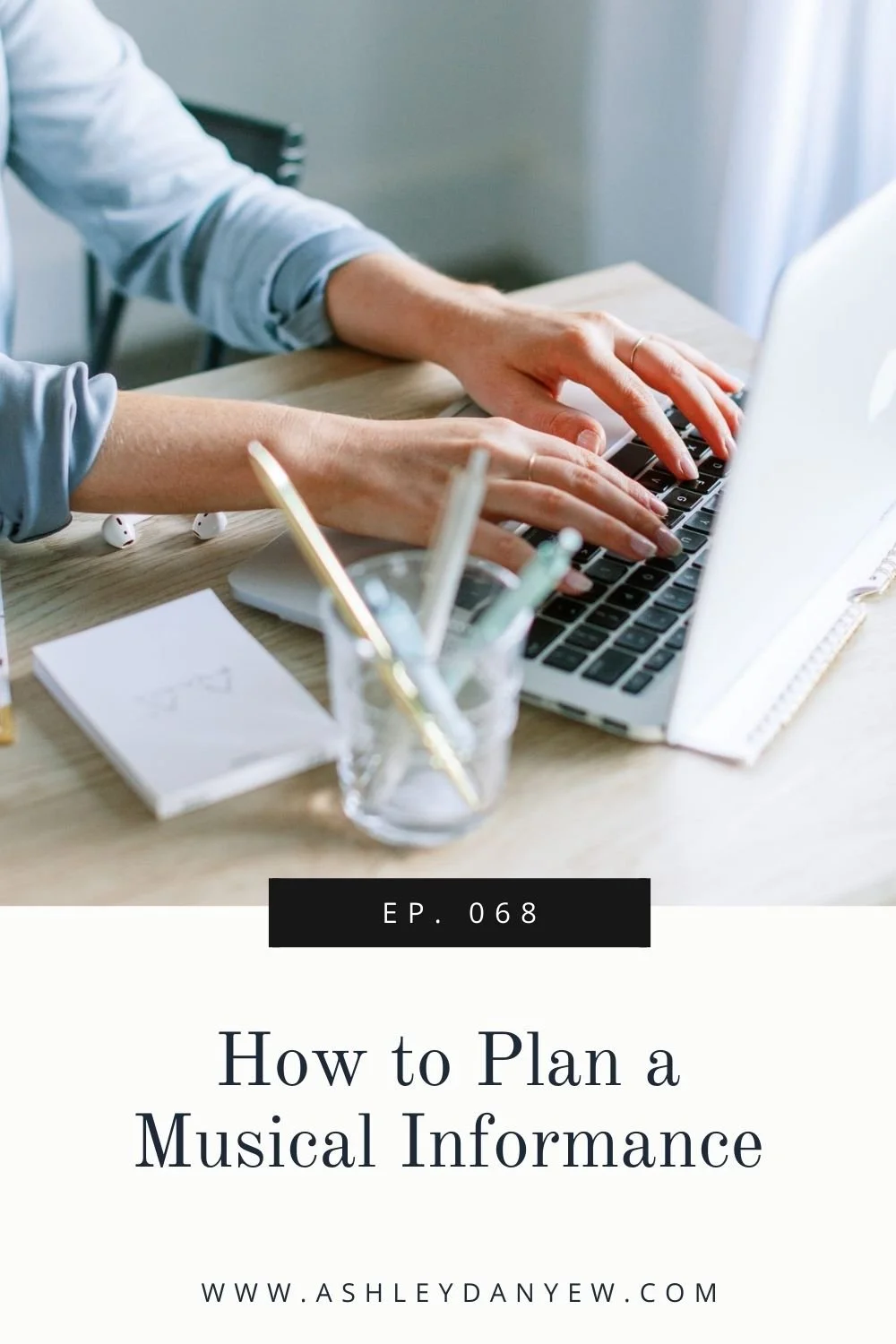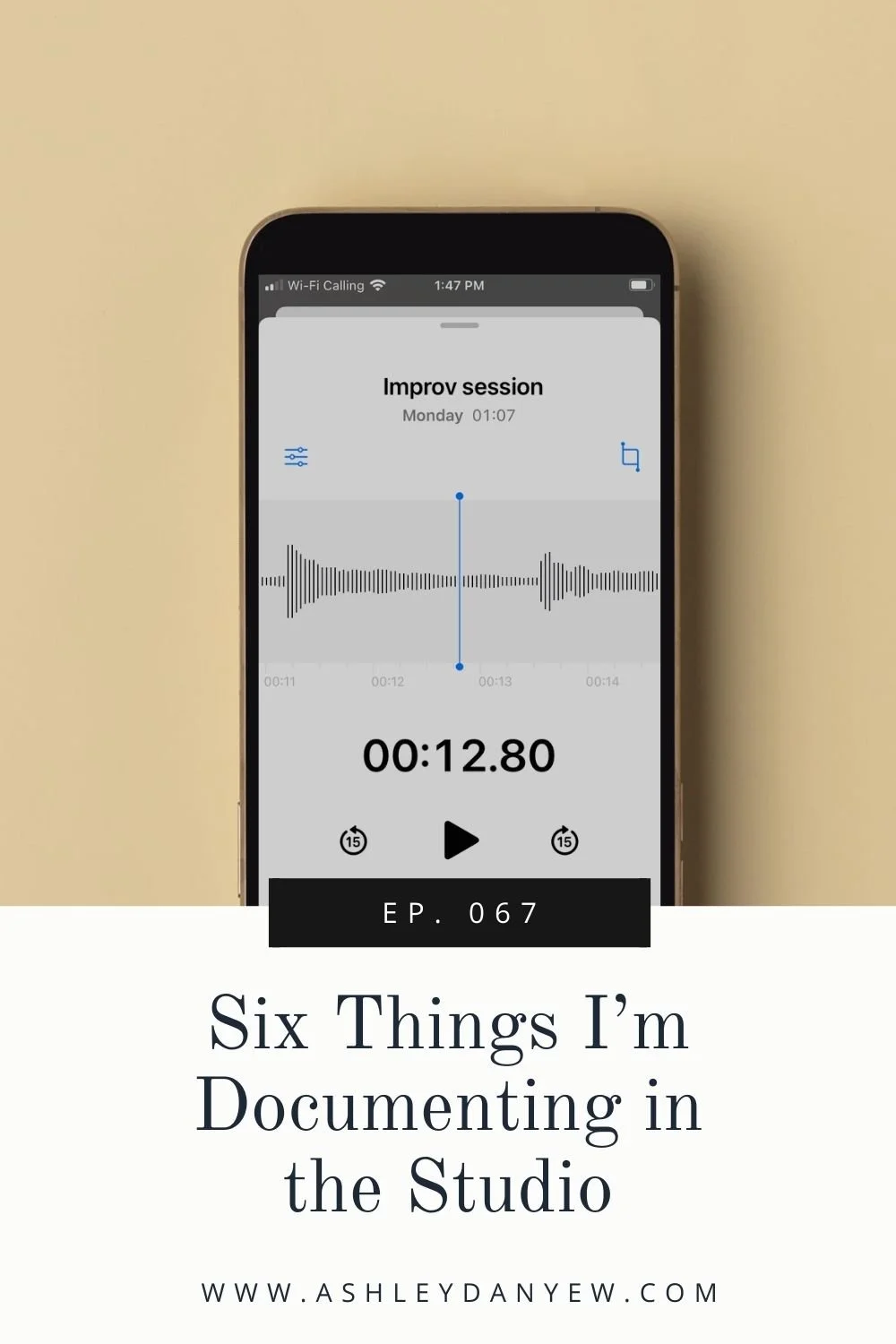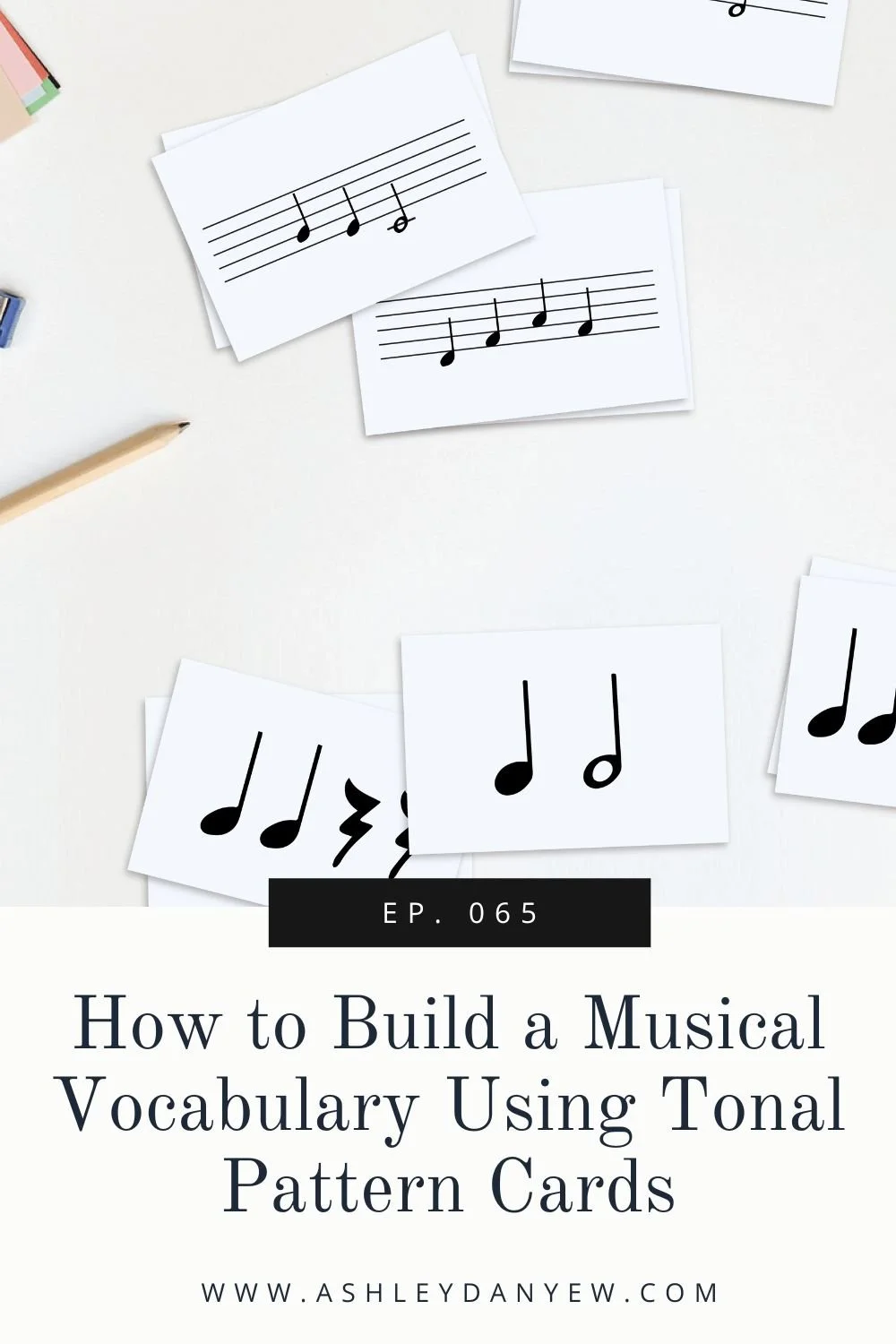Resources Mentioned
*Disclosure: I get commissions for purchases made through links in this post.
I was in grad school at the time.
I remember the warm, wood-paneled walls of the recital hall where we gathered; the blue theater chairs and parquet floors; the tall windows along one wall and narrow stage at the front, large enough for only a Steinway grand piano and a few chairs and music stands.
I liked to sit toward the back because, since the hall was small, it gave me a good visual perspective. I pulled out my wooden notebook with the leather spine, flipped to the next clean page, and began to write.
This is where I captured ideas and inspiration and revelations from teachers like Martin Katz, Graham Johnson, Victor Rosenbaum, Rena Sharon, and Alice Parker, among others.
Flipping through my notebook, I find an entry from March 21, 2014 when Graham Johnson came for a masterclass. He was coaching a duo on a Schumann art song when he said, "Don't ever find yourself going through the motions. How can that engage your heart?"
A few pages before that, I read notes on leading octave jumps with the thumb side of the hand, playing "up" staccati vs. "down," traveling on long notes, creating a "French" sound with finger-pedaling, throwing the arm, wrist rotation, and creating a soft atmosphere with loose arms and relaxed elbows.
There's so much we can learn from experiences like this, from observing how music is made—the gestures, the movement, the physicality of it.
As a student, I remember feeling like there was so much to take in: to see, hear, and experience. That's why I took notes.
Now, as a teacher, I've been thinking about ways to provide my students—even elementary-age—with more opportunities for observation, as another avenue of learning.
In Episode 041, I shared about my renewed commitment to focus on the music in each lesson. This is another way I'm pursuing that goal lately.
The Power of Observation in Music Learning
When we think about music, we may think about sound, color, bright vs. dark, balance, character, emotion, and feeling. When we think about teaching music, we may think about how to explain these intangible concepts to our students. What analogies can we use? How can we relate it to something they know or have experienced?
Here's what I'm learning:
So often, we get caught up in trying to verbally explain how to do something that we forget the power of demonstration and observation.
Timothy Gallwey, author of The Inner Game of Tennis, talks about the importance of visual images in teaching. He writes, “Images are better than words, showing better than telling.”
He later explains:
“Words can only represent actions, ideas and experiences. Language is not the action, and at best can only hint at the subtlety and complexity contained in the stroke. Although the instruction thus conceived can now be stored in the part of the mind that remembers language, it must be acknowledged that remembering the instruction is not the same as remembering the stroke itself.”
I know he's talking about tennis here, but the word stroke can apply to our gestures on an instrument, too. When Gallwey says, "Language can only hint at the subtlety and complexity contained in the stroke," think about how this applies to your instrument. Think about a time when you observed someone else playing and gained greater insight into the complexity of a particular gesture.
I like Gallwey's final point, too: "Remembering the instruction is not the same as remembering the stroke itself." Think about the powerful effect of storing a video clip in your memory vs. storing a set of verbal instructions or guidelines. Which has the potential to be of greater influence and more long-lasting for the learner?
The other benefit of using demonstration and observation in your teaching is that it's often a much quicker way of conveying information.
Show vs. Tell
Recently in my teaching, I've been looking for opportunities to show rather than tell. And I'm continually surprised by how quickly my students recognize what I'm trying to communicate and are able to imitate it effectively. Often, when they see something with their eyes, they're able to take in more information and apply it more quickly than if they have to take in my verbal instructions, translate that into something physical, and try it for themselves and often times they're unsure if they're doing it right.
Through the power of observation, my students are learning about wrist rotation, down-up gestures, and how to lead with the elbow and arm, but even my littlest students are learning about hand shape, heavy arm drops, wrist rolls, and staccato bounces.
A Visual Model for Music Learning
Here's where I want to go next.
I want to introduce more demonstration recordings into my teaching, not just for the sake of presenting an aural model, but a visual one.
I want to work with my intermediate students to help them learn how to listen critically, to compare recordings and discuss how each interpretation is different, to observe gestures, and study how that impacts the sound that the performer is creating.
I want to work with my elementary students to help them learn how to begin and end pieces, how to bounce lightly for staccato, and drop with a heavy arm for loud sounds. I want them to see other children their age playing their same pieces.
I want to bring the masterclass experience into my private lessons.
Group classes or studio classes are another good way to do this and perhaps that's something you've built into your studio already. I started offering monthly studio classes for my elementary and intermediate students and buddy lessons for my beginners a few years ago but our schedule was disrupted when we moved online during the pandemic.
Related episode: Ep. 018 - This Is What an Elementary Buddy Lesson Looks Like
Though I built in time for performance in each class, I found the focus was more on developing confidence as a performer than what students could learn through observation. Students were encouraged to share "works in progress," as well, giving us an opportunity to talk about practicing strategies, challenges, rewards, and different learning processes.
We also used those classes as an opportunity to learn about listening critically and giving positive and constructive feedback.
All of these things are good, but the difference between that experience and what I'm trying to do now is finding a visual (and aural) model for my students to experience. There's something powerful about watching a performance that truly serves as a model, an inspiration, and a goal.
For my older students, I'm building in time for this in our lessons—sometimes this is me demonstrating for them and sometimes it's reviewing recordings in advance and choosing two or three to review together and discuss.
For my younger students, I'd like to do more of this (perhaps once a month? I think it would be challenging to do it more frequently than that), but I think there's also an opportunity to send demonstration videos to parents to review as part of the student's practice time at home. This way, the parents have a visual (and aural) model to guide them.
“This is a tool we can use as teachers to foster curiosity and careful listening, highlight the visual aspects of music-making, and hopefully inspire our students to continue learning and developing their musicianship skills.”
A Tool to Nurture Musical Development
Now, I feel like I need to say a quick disclosure about this before we close today. The intention of providing a model or demonstrating for a student is not to highlight the discrepancy between where they are and where they should or could be.
It's simply a tool we can use as teachers to foster curiosity and careful listening, to highlight the visual aspects of music-making, and hopefully inspire our students to continue learning and developing their musicianship skills.
I want to close with one more quote by Timothy Gallwey. He writes:
“When we plant a rose seed in the earth, we notice that it is small, but we do not criticize it as ‘rootless and stemless.’ We treat it as a seed, giving it the water and nourishment required of a seed. When it first shoots up out of the earth, we don’t condemn it as immature and underdeveloped; nor do we criticize the buds for not being open when they appear. We stand in wonder at the process taking place and give the plant the care it needs at each stage of its development. . . .Within it, at all times, it contains its whole potential. It seems to be constantly in the process of change; yet at each state, at each moment, it is perfectly all right as it is.”
That to me is a beautiful summary of the teaching and learning process. If we believe, as Gallwey writes, that "within it, at all times, it contains its whole potential," how can we continue to guide and nurture our students to grow and change and continue developing into their true musical selves?
A question to ponder this week and in the weeks to come.
I’d love to hear from you.
How do you use demonstration and observation in your music teaching?



